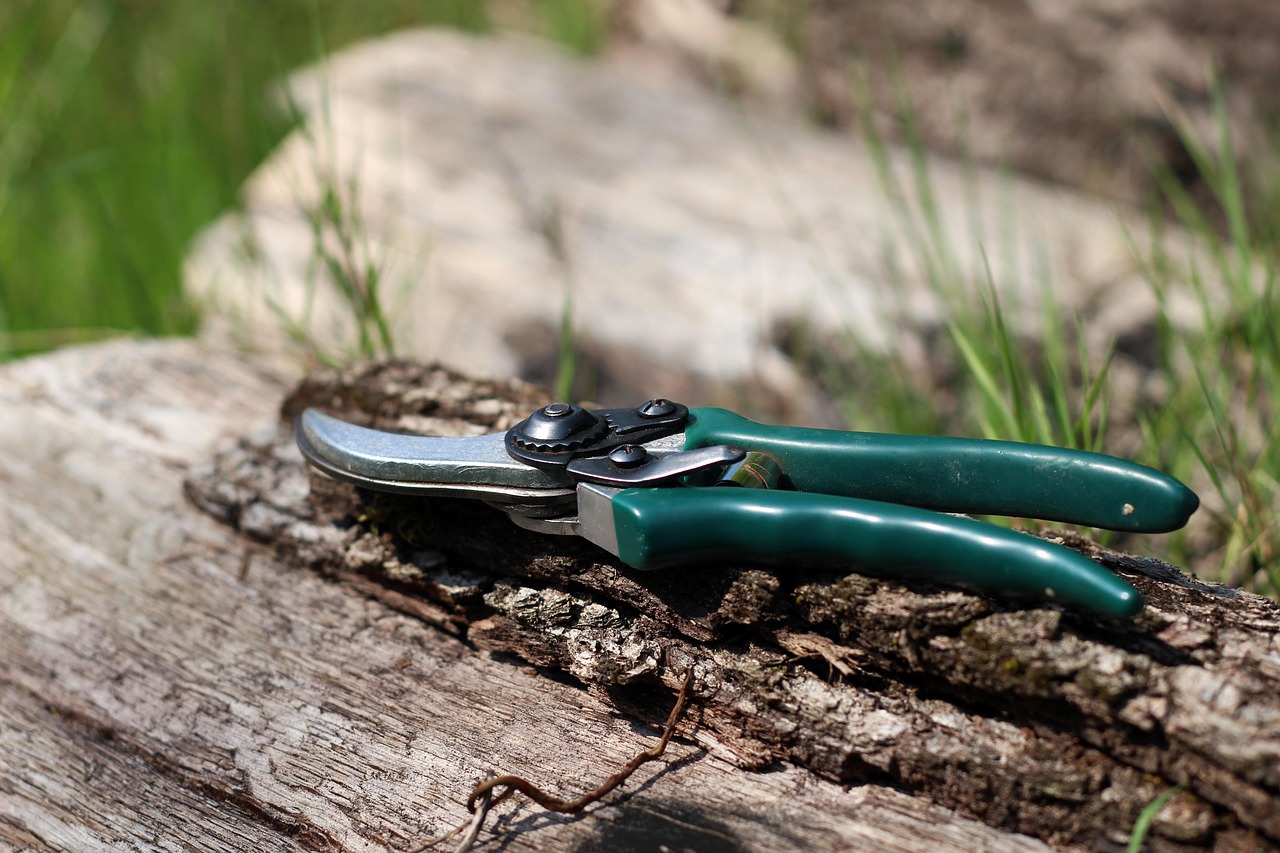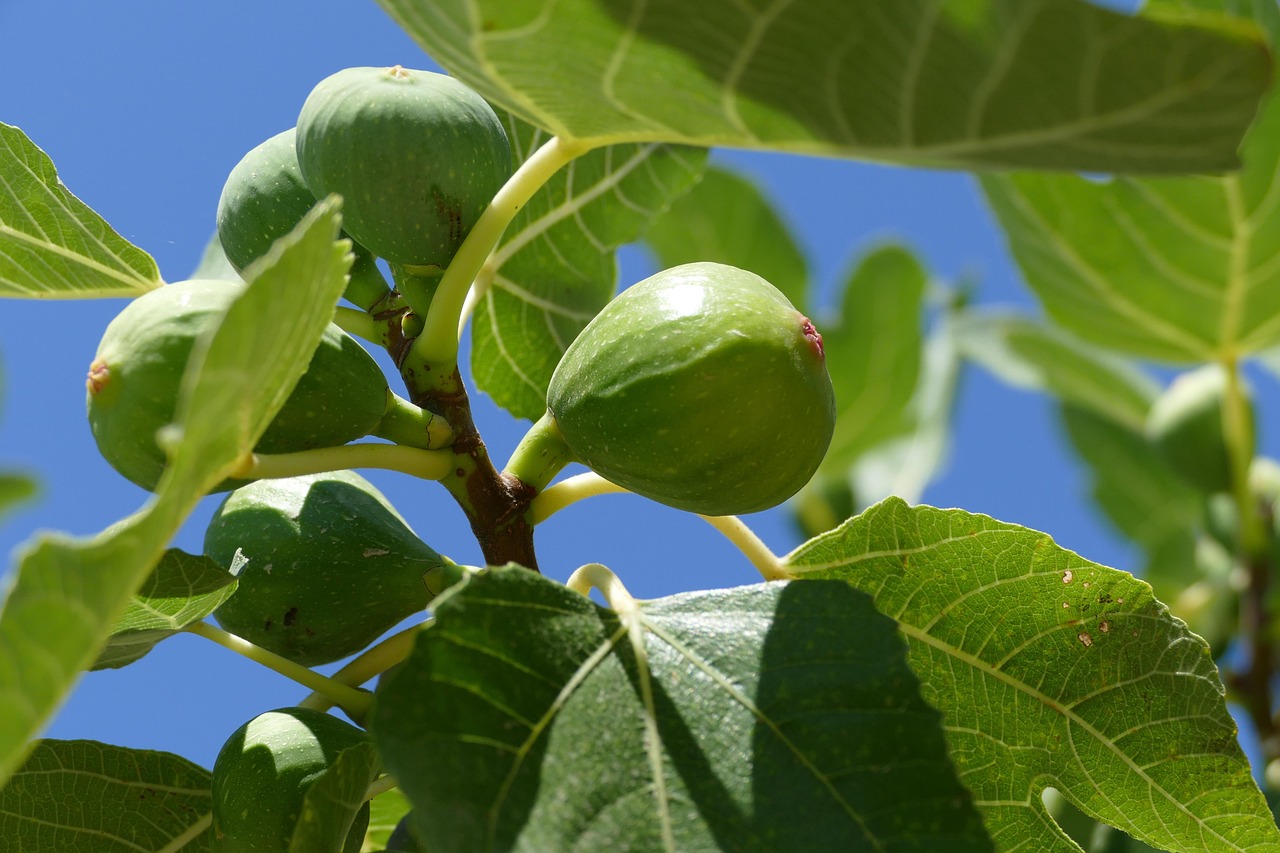Pruning fig orchards on small farms involves techniques that enhance fruit quality and tree health. Key methods include winter pruning to shape the tree, summer pruning for fruit production, and maintaining proper spacing for air circulation and sunlight exposure.
Figs are a delicious fruit that can thrive in a variety of climates. Small farms often choose to cultivate fig trees due to their relatively low maintenance and high yield potential. However, proper care is essential to maximize productivity. One of the most crucial care aspects is pruning. Pruning fig trees not only promotes better growth but also helps in producing high-quality fruit. Understanding the best techniques for pruning can significantly affect the overall success of a fig orchard.

In fig orchards, pruning serves several purposes:
- Improves air circulation around the tree.
- Enhances sunlight penetration through the canopy.
- Encourages robust fruit development.
- Prevents disease by removing dead or diseased wood.
When it comes to pruning fig trees, timing is key. The best time to prune is typically during the dormant season, which is late winter to early spring. This timing allows the tree to heal before the growing season begins. However, some summer pruning may be beneficial for managing growth and improving fruit production.
Understanding Fig Tree Growth Patterns
Fig trees are unique in their growth habits. They can grow quite large, so understanding their growth patterns is essential for effective pruning. Fig trees produce fruit on both new and old wood, which makes pruning a bit different from other fruit trees.

Key characteristics of fig tree growth include:
- Rapid growth during the growing season.
- Fruit develops on previous year’s growth.
- Branches can become overcrowded if not managed properly.
This understanding helps farmers decide which branches to keep and which to remove during pruning. By focusing on the right areas, farmers can ensure a healthy balance of growth and fruit production.
Pruning Techniques for Small Farms
There are several techniques that small farm owners can implement when pruning their fig orchards. Each technique has its distinct benefits and timing considerations.

Winter Pruning
Winter pruning involves cutting back branches while the tree is dormant. This technique helps shape the tree and encourages strong new growth in the spring. Here are some steps involved:
- Remove any dead or damaged branches.
- Thin out crowded areas to improve air circulation.
- Selectively shorten long branches to encourage new growth.
This method is particularly effective in maintaining a manageable size for the tree, which is critical on small farms where space may be limited.
Summer Pruning
Summer pruning focuses on controlling growth and promoting fruit production. This technique is done after the initial growth phase and before the harvest season. The main goals include:

- Removing suckers that grow from the base of the tree.
- Trimming back overly long branches to encourage fruiting on shorter branches.
- Thinning foliage to allow sunlight to reach developing fruit.
Summer pruning can enhance fruit size and quality, making it an important technique for small farm operations looking to maximize their harvests.
Maintenance Pruning
Maintenance pruning is an ongoing process that involves regular checks throughout the growing season. Farmers should regularly inspect trees for signs of disease or overcrowding. Quick actions can prevent larger problems later on. Key maintenance tasks include:
- Regularly removing any dead or diseased branches.
- Ensuring that branches are not rubbing against each other.
- Monitoring tree health and adjusting pruning techniques as needed.
This proactive approach helps maintain tree health and ensures continued productivity.
Considerations for Different Varieties
Different fig varieties may have specific pruning needs, so it’s vital for small farm owners to research their particular variety. Some figs may produce more fruit on old wood, while others may benefit from heavy summer pruning. Knowing these distinctions can further optimize the benefits of pruning techniques.
| Fig Variety | Best Pruning Time | Pruning Focus |
|---|---|---|
| Brown Turkey | Winter | Remove old wood and shape tree |
| Smyrna | Summer | Encourage new growth and fruiting |
| Kadota | Winter | Mainly focus on thinning and shaping |
By tailoring pruning techniques to specific fig varieties, farmers can enhance their orchard’s productivity and sustainability. Understanding these practices lays a strong foundation for successful fig farming on small-scale operations.
Pest and Disease Management in Fig Orchards
Maintaining healthy fig trees goes beyond just effective pruning techniques. Pest and disease management is crucial in ensuring the longevity and productivity of fig orchards. Fig trees can be susceptible to various pests and diseases, which can undermine the benefits of proper pruning. Understanding how to identify and manage these issues can help small farm owners protect their investments.
Common Pests Affecting Fig Trees
Several pests may harm fig trees, leading to reduced yield and poor fruit quality. Recognizing these pests early can prevent severe damage. Some common fig tree pests include:
- Fig Beetle: This pest is notorious for boring into figs, causing them to rot.
- Spider Mites: These tiny pests can cause leaf discoloration and webbing on the branches.
- Scale Insects: These insects attach themselves to branches, sucking sap and weakening the tree.
- Leafhoppers: They feed on leaf sap and can transmit diseases among trees.
Regular inspections of fig trees are essential for early detection. Checking the underside of leaves and branches can reveal the presence of pests before they cause significant damage.
Integrated Pest Management (IPM)
Implementing an Integrated Pest Management (IPM) strategy allows farmers to manage pests effectively while minimizing the use of chemicals. Here are key components of an IPM approach:
- Monitoring: Regularly check for pest activity and identify potential threats.
- Identification: Accurately identify pests to select the most effective control methods.
- Threshold Levels: Determine acceptable pest levels to avoid unnecessary treatments.
- Cultural Practices: Implement practices such as proper watering and nutrient management to strengthen tree health.
- Biological Controls: Introduce beneficial insects that prey on harmful pests.
This multifaceted approach not only protects the fig trees but also promotes a healthier ecosystem within the orchard.
Disease Prevention and Control
Diseases can significantly impact fig production if not managed properly. Some of the most common diseases affecting fig trees include:
- Fig Rust: A fungal disease that causes leaf spots and premature leaf drop.
- Botrytis Blight: This fungus causes fruit rot and can spread rapidly in humid conditions.
- Root Rot: Often caused by overwatering or poor drainage, leading to tree decline.
Preventative measures play a critical role in managing these diseases. Here are some effective strategies small farm owners can implement:
Preventative Strategies
- Proper Watering: Avoid overwatering and ensure good drainage in the soil to prevent root rot.
- Fungicide Application: Apply fungicides as a preventative measure during high humidity periods if necessary.
- Disease-Resistant Varieties: Select disease-resistant fig varieties when planting new orchards.
- Sanitation: Clean up fallen leaves and fruit to reduce disease spores in the environment.
Identifying Diseases
A timely diagnosis of diseases can make a significant difference in controlling their spread. Farmers should familiarize themselves with symptoms of common diseases:
| Disease | Symptoms | Treatment |
|---|---|---|
| Fig Rust | Yellow-orange spots on leaves, leaf drop | Fungicide application, improve air circulation |
| Botrytis Blight | Moldy appearance on fruit, rotting | Remove affected fruit, apply fungicide |
| Root Rot | Sudden wilt, yellowing leaves, poor growth | Avoid overwatering, improve drainage |
By staying vigilant and applying appropriate treatments at the first signs of disease, farmers can safeguard their fig orchards and maintain healthy trees.
The Role of Proper Nutrition in Fig Tree Health
Nutritional management is another critical aspect of maintaining healthy fig trees. Proper nutrition ensures that trees have the essential nutrients required for growth, fruiting, and overall health. Small farms should focus on balanced fertilization practices tailored to their soil conditions.
Nutrient Requirements for Fig Trees
The primary nutrients required by fig trees include:
- Nitrogen (N): Promotes leafy growth and overall vigor.
- Phosphorus (P): Supports root development and flowering.
- Potassium (K): Enhances fruit quality and helps in drought resistance.
A soil test is an excellent starting point for determining nutrient levels in the orchard soil. Based on the results, farmers can adjust their fertilization strategies to ensure optimal growth conditions for their fig trees.
This focus on nutrition, combined with effective pruning, pest management, and disease control, lays a solid foundation for successful fig farming on small-scale operations. By integrating these practices, farmers can enhance both the quality and quantity of their fig production.
Harvesting Techniques for Fig Trees
Once fig trees have been properly pruned, maintained, and nourished, the next crucial step is harvesting the fruit. Proper harvesting techniques ensure that farmers can maximize their yield while maintaining the quality of the figs. Fig trees typically bear fruit in late summer to early autumn, depending on the variety and climate.
Identifying the Right Time to Harvest
Knowing when to harvest figs is essential for achieving the best flavor and texture. Figs do not continue to ripen once picked, making timing critical. Here are some indicators that figs are ready for harvest:
- Color Change: Figs should exhibit a change in color to their mature hue, which varies by variety.
- Softness: Gently squeeze the fig; it should yield slightly to pressure.
- Fruit Drop: Ripe figs may naturally drop from the tree, indicating they are ready to be harvested.
- Aroma: A sweet, fruity aroma often signals that figs are at peak ripeness.
Farmers should regularly check their trees during the harvest season to ensure they do not miss the optimal picking window.
Harvesting Methods
There are various methods for harvesting figs depending on the size of the orchard and the equipment available. Here are some effective harvesting techniques:
- Hand Harvesting: This method is most common on small farms. Farmers can gently twist or cut the fruit from the branch, ensuring not to damage the fruit or the tree.
- Use of Harvesting Tools: Tools like small clippers or scissors can help reduce damage during harvesting. These tools are particularly useful for reaching high branches.
- Harvesting Baskets: Using baskets or containers to collect figs minimizes bruising and keeps them organized during transport.
It is important to handle the figs delicately as they can bruise easily. Harvesting in the morning or late afternoon when temperatures are cooler can also reduce stress on the fruit.
Post-Harvest Handling and Storage
The way figs are handled after harvesting can significantly affect their freshness and shelf life. Proper post-harvest techniques are essential for maintaining quality and preventing spoilage.
Cleaning Figs
After harvesting, it is important to clean figs gently to remove any dirt or debris. Here are some simple steps for cleaning:
- Rinse figs under cool water briefly.
- Pat them dry with a clean towel or cloth.
- Avoid soaking them, as excessive moisture can lead to rot.
Storage Options
Figs should be stored properly to extend their shelf life. Depending on how quickly they will be consumed, farmers can choose from several storage options:
| Storage Method | Description | Shelf Life |
|---|---|---|
| Refrigeration | Store figs in a breathable container in the fridge. | Up to 5 days |
| Freezing | Wash, dry, and freeze figs in airtight bags. | 6 months or longer |
| Drying | Dried figs can be stored at room temperature in a cool, dark place. | 1 year or more |
Each storage method has its benefits and should be chosen according to how soon the figs will be consumed or sold. Proper storage practices help reduce waste and increase profitability.
Marketing Fresh Figs
For small farms, marketing fresh figs effectively can lead to greater sales and customer satisfaction. Figs have become increasingly popular among consumers due to their unique flavor and health benefits. Farmers should consider various marketing strategies to reach their target audience.
Direct Sales Opportunities
Farmers can explore multiple avenues for selling their fresh figs directly to consumers:
- Farmers’ Markets: Setting up a booth at local farmers’ markets allows for direct interaction with customers and builds community relationships.
- On-Farm Sales: Offering fresh figs for sale right at the farm can attract visitors and provide a unique shopping experience.
- CSA Programs: Participating in Community Supported Agriculture (CSA) programs allows customers to subscribe for regular deliveries of fresh produce, including figs.
Online Marketing Strategies
The internet provides ample opportunities for small farm owners to market their figs:
- Create a Website: A dedicated website showcasing the farm’s products can attract a wider audience.
- Social Media Engagement: Utilizing platforms like Instagram and Facebook can help farmers share visually appealing content about their figs, including recipes and growing tips.
- Email Newsletters: Building an email list allows farmers to inform customers about new harvests, special offers, and events at the farm.
By leveraging both direct sales and online marketing strategies, small farm owners can effectively promote their fresh figs and grow their customer base.
Sustainability Practices in Fig Farming
Sustainability is becoming increasingly important in agriculture. For small farms growing figs, implementing sustainable practices can lead to healthier ecosystems and long-term viability. Sustainable fig farming focuses on preserving natural resources while producing high-quality fruits.
Water Conservation Techniques
Certain practices can help conserve water in fig orchards:
- Drip Irrigation: This method delivers water directly to the root zone, minimizing evaporation and runoff.
- Mulching: Applying organic mulch around trees helps retain moisture in the soil while suppressing weeds.
Biodiversity and Crop Rotation
Diverse planting can enhance soil health and reduce pest pressures. Incorporating cover crops or companion planting with figs can improve biodiversity within the orchard. This practice encourages beneficial insects and enhances pollination.
Sustainable fig farming not only supports environmental conservation but also meets growing consumer demand for responsibly sourced products. By adopting these methods, small farm owners can contribute positively to their communities while ensuring productive orchards for years to come.
Maintaining Soil Health in Fig Orchards
Soil health is a cornerstone of successful fig farming. Healthy soil promotes vigorous tree growth, enhances fruit quality, and increases resilience against pests and diseases. To maintain ideal soil conditions in fig orchards, small farm owners should consider a variety of practices that enrich the soil and sustain its fertility.
Organic Matter Incorporation
Adding organic matter to the soil can significantly improve its structure, nutrient content, and moisture retention. Some effective methods for incorporating organic matter include:
- Composting: Creating compost from farm waste, kitchen scraps, and other organic materials adds nutrients back into the soil.
- Green Manure: Planting cover crops like clover or vetch during off-seasons can enrich the soil when tilled under.
- Mulching: Organic mulch not only conserves moisture but also gradually adds nutrients to the soil as it decomposes.
Soil Testing and Amendments
Regular soil testing is essential to understand nutrient levels and pH balance. Based on test results, farmers can amend the soil accordingly. Common amendments include:
- Lime: Used to raise soil pH if it is too acidic.
- Sulfur: Applied to lower soil pH in alkaline soils.
- Fertilizers: Organic or synthetic fertilizers can be applied as needed to address specific nutrient deficiencies.
By continually monitoring soil conditions, farmers can make informed decisions that promote long-term soil health.
Community Engagement and Education
Engaging with the community and participating in educational programs can enhance the success of fig farming. Networking with other farmers and sharing knowledge leads to better practices and fosters a supportive farming environment. Here are some ways to get involved:
- Local Agricultural Extension Services: Many regions have extension services that offer workshops, resources, and expert advice on fig cultivation.
- Farm Tours and Workshops: Hosting educational events at the farm can build community interest and increase local sales.
- Cooperative Associations: Joining farmers’ cooperatives allows for shared resources, marketing efforts, and collective bargaining power.
Through community engagement, farmers can learn from one another and develop strategies that contribute to sustainable practices in fig farming.
Understanding Market Trends
The fig market has been experiencing growth due to increasing consumer interest in healthy eating. This trend presents opportunities for small farms to capitalize on. Understanding current market trends is crucial for success:
- Fresh Figs vs. Dried Figs: Many consumers prefer fresh figs for their taste and health benefits, but dried figs are also popular for snacking and baking.
- Health Benefits: Figs are rich in dietary fiber, antioxidants, and vitamins, making them appealing to health-conscious consumers.
- Local Sourcing: Increasing demand for locally sourced produce means that small farms have a competitive edge by offering fresh figs directly to consumers.
Staying informed about market trends enables farmers to adjust their production and marketing strategies accordingly.
Final Thoughts
The journey of cultivating a successful fig orchard involves careful planning and execution of various practices. From mastering pruning techniques to implementing effective pest management strategies, every step plays a critical role in achieving high-quality yields. Sustainable practices not only benefit the environment but also enhance the overall productivity of small farms.
As small farm owners implement these methods, they not only promote their own success but also contribute positively to their communities and local economies. By fostering relationships with consumers through direct sales and educational initiatives, farmers can build a loyal customer base that values quality and sustainability.
The future of fig farming on small-scale operations looks promising as more people recognize the unique flavors and health benefits of figs. By adopting best practices in pruning, pest management, soil health, and marketing, small farm owners can create vibrant orchards that thrive for generations. Embracing these techniques will ensure that farmers can enjoy the fruits of their labor while providing delicious figs to their communities.
